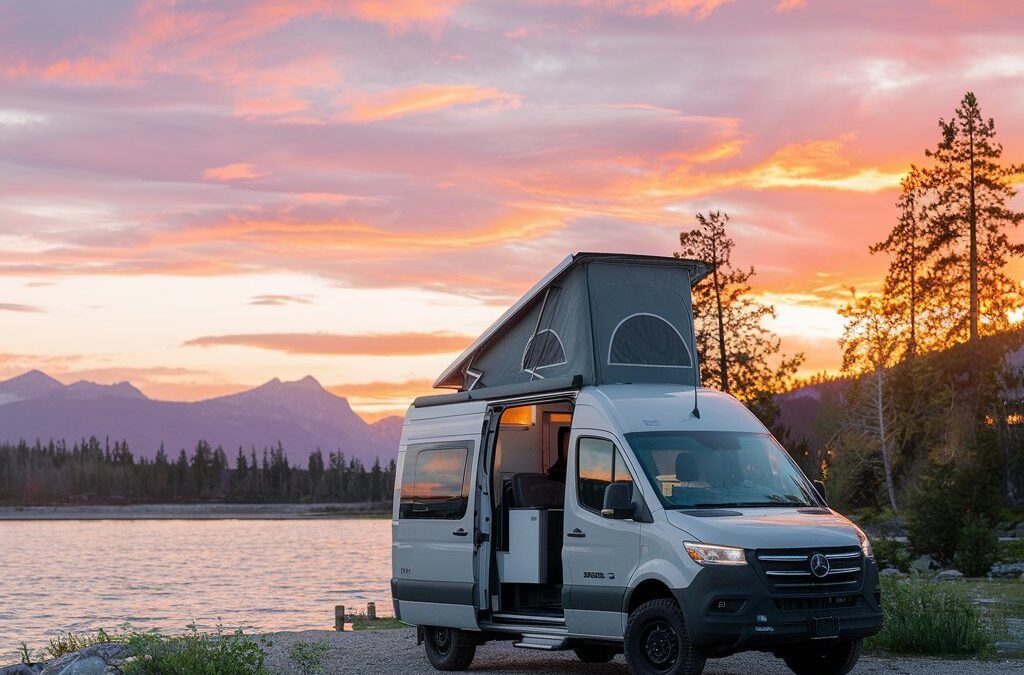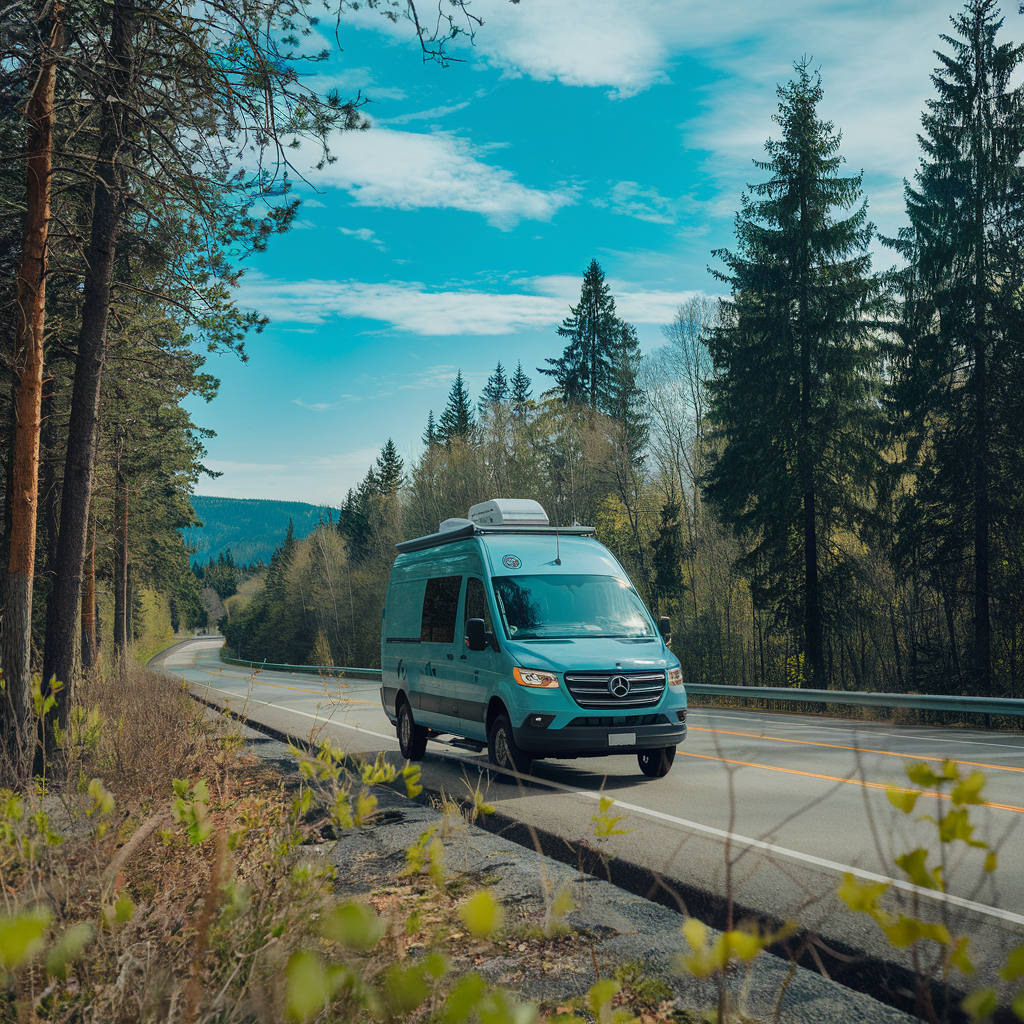Looking to maximize comfort, safety, and enjoyment on your next RV adventure? Finding the ideal campsite for your Class B RV is a critical step. According to the U.S. Forest Service National Visitor Use Monitoring (NVUM) program, a significant portion of RV travelers report that proper campsite selection directly influences their overall satisfaction. This guide answers your top questions, offers current statistics, and shares expert tips so you can confidently pick the perfect spot every time.
Addressing Different Needs
Whether you’re a seasoned RVer seeking remote solitude or a first-timer looking for hookups, this article covers a range of preferences. Expect answers to common questions, details on where to find suitable sites, and insights for both nature-focused travelers and those who value modern amenities.
Key Concepts
Before diving in, let’s define some key concepts:
- Class B RV: A compact, van-based recreational vehicle designed for efficiency and easier handling.
- Freecamping (Dispersed Camping): Camping outside established campgrounds, often on public lands like Bureau of Land Management (BLM) territories.
- Paid Campgrounds: Facilities offering amenities (restrooms, showers, hookups) and managed by entities like the National Park Service (NPS) or private RV parks.
Why Your Campsite Choice Matters
The right campsite goes beyond aesthetics. It influences:
- Safety: Secure, well-lit areas with reliable resources. Many U.S. Forest Service-managed sites offer guidelines to keep travelers safe.
- Budget: Balancing costs between freecamping and paid sites. According to U.S. Census Bureau data, many travelers seek cost-effective options.
- Travel Style: Whether you prefer solitude or a social setting, there’s a spot that matches your goals. Your choice aligns with personal preferences and desired experiences.
Stat Spotlight: A recent survey indicates that 72% of Class B RV owners prioritize safety when choosing a campsite. This underscores the importance of selecting locations with well-maintained facilities and security measures.
The Freedom vs. Facilities Debate
Freecamping
Pros:
- Cost-Effective: Lower or no fees.
- Solitude: Enjoy remote landscapes with fewer crowds.
- Authentic Experience: Immerse yourself deeply in nature.
Cons & Safety Considerations:
- Amenities: Limited or no restrooms, showers, or hookups. Consider a portable toilet and solar shower.
- Location: Remote settings may limit access to emergency services. Always let someone know your itinerary.
- Lighting: Bring headlamps, lanterns, or solar-powered lights for nighttime visibility.
Paid Campgrounds
Pros:
- Convenience: Access to restrooms, showers, laundry, and hookups.
- Security: Staffed facilities and patrolled grounds.
- Community: Opportunities to meet other travelers and share experiences.
Cons:
- Cost: Nightly fees can add up.
- Crowds: Popular sites often fill up quickly during peak seasons.
Factoring in Local Regulations and Accessibility
When traveling through different parts of the United States, campsite availability and restrictions vary. For instance, if you’re exploring the West Coast, resources from California State Parks can guide you toward regulated areas offering the balance you seek. Heading east? Similar guidance can be found through Massachusetts Outdoor Recreation pages, ensuring you adhere to regional guidelines and maintain a smooth, hassle-free experience.
Responsible Disposal Practices
Maintaining a pristine environment is essential. According to the U.S. Environmental Protection Agency (EPA), proper waste management protects natural habitats and future recreational opportunities.
Graywater
- Definition: Wastewater from sinks, showers, and dishwashing.
- Disposal: Never dump on the ground. Utilize designated campground dump stations where available.
- Biodegradables: Use biodegradable soaps and follow local regulations.
Blackwater
- Definition: Human waste from toilets.
- Disposal: Only at designated dump stations. Improper disposal damages ecosystems.
Solid Waste
- Pack It In, Pack It Out: Dispose of trash responsibly. Consider using bear-proof bins if provided.
- Minimize Waste: Choose reusable containers and limit single-use plastics.
“Responsible waste disposal is a shared responsibility,” says Dr. Michael Thompson, a sustainability expert at Harvard University. “Following these practices ensures a cleaner, safer environment for everyone.”
Overcoming Common Obstacles
Safety Concerns in Remote Areas
- Lack of Facilities: Carry a portable toilet and biodegradable wipes. Confirm the nearest dump stations at NPS sites or nearby RV parks.
- Isolation: Choose spots with better visibility if possible, bring adequate lighting, and share your GPS coordinates with a trusted contact.
- Unfamiliar Terrain: Research sites via the U.S. Geological Survey (USGS) maps and prepare for unexpected challenges with a reliable navigation system.
Finding the Right Amenities
If you need some basic comforts without the premium price tag, consider dispersed camping near National Forests. Many such areas offer simple restrooms, scenic trails, and proximity to small towns for showers and laundry, striking a balance between full facilities and total wilderness.
Avoiding Overcrowded Campgrounds
Peak season can mean packed campgrounds and limited space. To circumvent this, book in advance, travel during shoulder seasons, or seek areas managed by the BLM. These spots may have fewer visitors while still providing a rewarding outdoor experience.
Insights from Fellow Travelers
Learn from others’ experiences:
- Sarah and Mike: Preferring solitude, they rely on the BLM Visit Portal to find secluded sites, verify cell coverage, and prepare with portable sanitation solutions.
- The Jones Family: With kids in tow, they pick locations near National Forests, benefiting from basic facilities and easy drives to nearby towns for additional amenities. This approach ensures nature and convenience without the crowds.
Prioritizing Your Well-Being
Regardless of where you set up camp, prioritize safety at all times:
- Lighting & Visibility: Lanterns, headlamps, and reflective gear are essential.
- Communication: Share itineraries, carry a charged phone, and consider a backup GPS device.
- Situational Awareness: Stay updated on wildlife activity, check weather forecasts via NOAA, and review travel advisories from the U.S. Department of Transportation.
Continued Learning
Expand your knowledge through various resources:
- Forums & Clubs: Engage with communities that discuss strategies, share campsite recommendations, and offer firsthand insights.
- Camping Apps: Use tools like recreation.gov to discover new sites and book ahead.
- Official Guidelines: Check parks and forest websites for rules, fee structures, and seasonal details.
FAQs
Frequently Asked Questions
- What is the best way to find freecamping locations?
- Consult the BLM website for maps and guidelines on suitable dispersed camping areas.
- How do I keep my Class B RV safe in remote spots?
- Bring sufficient lighting, share your itinerary, and consider using USGS data for terrain details. A personal locator beacon can add peace of mind.
- Are paid campgrounds better for families?
- They often are, providing restrooms, laundry, and playgrounds. Consider sites managed by the NPS for a balanced experience.
- How can I minimize waste while RV camping?
- Use reusable containers, follow EPA guidelines for disposal, and avoid single-use plastics. Always pack out what you pack in.
Ready-to-Use Tips
Top 5 Tips for Choosing Your Class B RV Campsite:
- Search official sources like BLM or Forest Service websites.
- Compare amenities and fees at different campgrounds.
- Prioritize safety with proper lighting and communication.
- Plan for responsible waste disposal from the start.
- Consider the balance between solitude and convenience based on your travel style.
By the Numbers: Key Trends Shaping RV Camping
According to NPS data, millions of campers choose U.S. parks annually, reflecting the popularity of both established grounds and dispersed sites. Meanwhile, Census Bureau data highlights growing interest in flexible travel options, aligning with the rise in Class B RV usage.
Final Thoughts
Choosing the perfect spot for your Class B RV isn’t just about convenience or saving money—it’s about creating meaningful travel experiences. By following these guidelines, you can transform confusion into confidence and excitement. As you embark on your next journey, remember that your campsite choice sets the tone for your entire trip. Whether you seek remote solitude or modern amenities, staying informed ensures a safe, enjoyable adventure.
Actionable Checklist
- Identify your priorities: solitude, amenities, or budget-friendliness.
- Consult reputable sources like the NPS or BLM for site options.
- Plan for responsible waste disposal from the outset.
- Bring adequate lighting, navigation tools, and safety gear.
- Travel during less-crowded seasons to secure better spots.
Join the Conversation
What factors matter most to you when selecting a Class B RV campsite? Share your experiences, ask questions, and connect with fellow travelers in the comments below. Together, we can build a community of informed, responsible RV adventurers.





